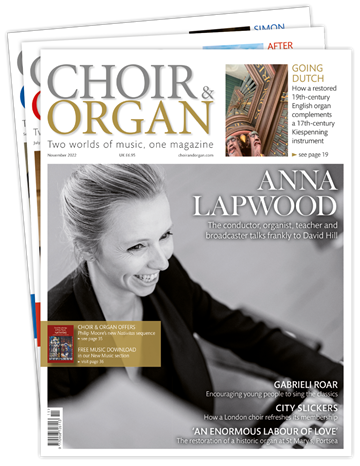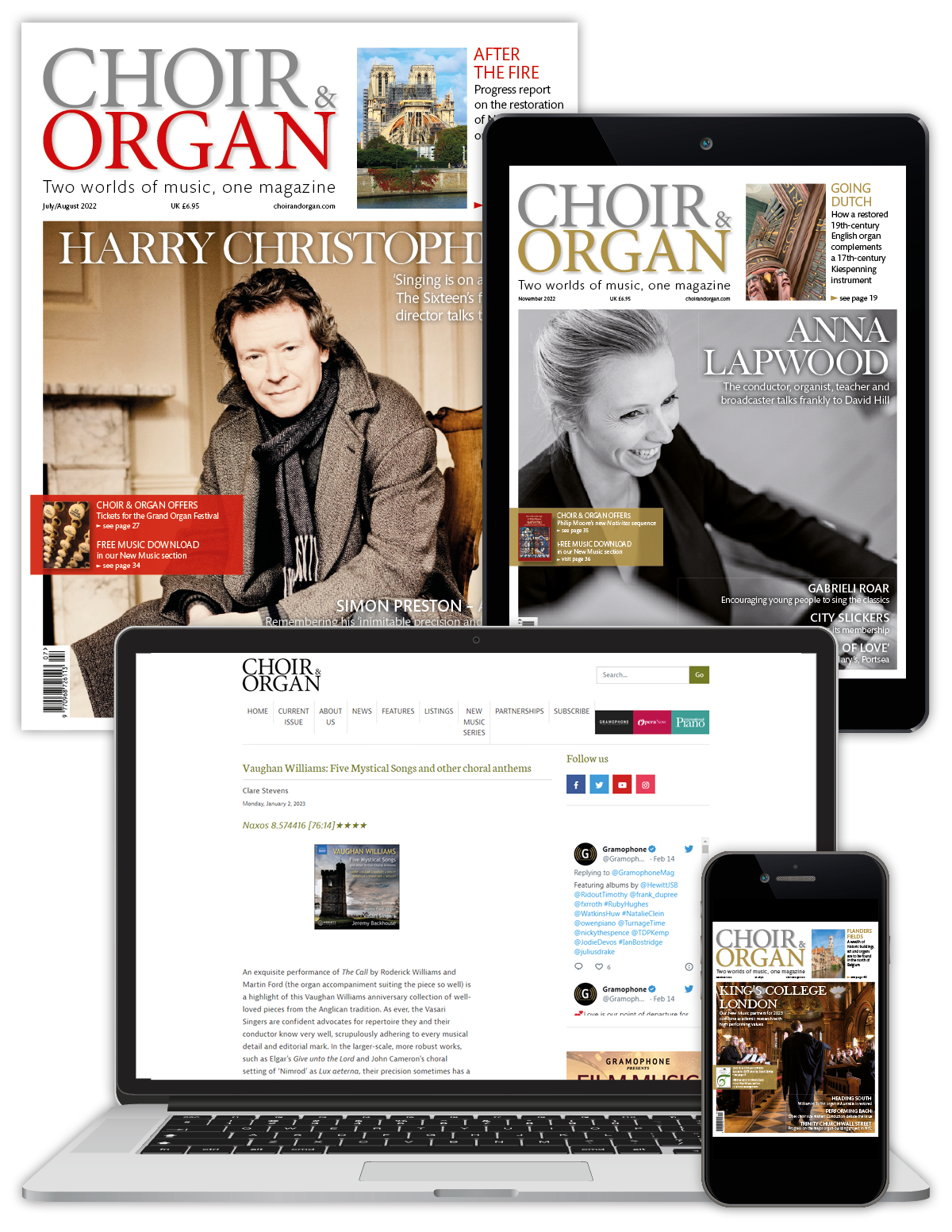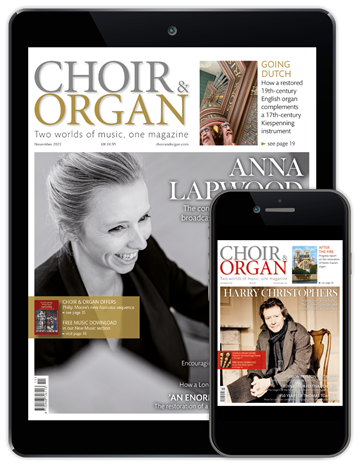Introducing the new concert organ at Helsinki’s Music Centre
Jan Lehtola
Friday, May 10, 2024
The wait for a concert organ fit for Helsinki’s Music Centre is over. Jan Lehtola introduces the technical and visual innovations of a major new instrument from Rieger Orgelbau

Performing Kaija Saariaho’s Maan Varjot (Earth’s Shadows) in the Music Centre back in 2015, I played on a temporary digital organ. The composer ventured that she would like to help if a pipe organ project were launched. Two years later, Saariaho gave €1m from her inheritance, on the understanding that Finnish cultural organisations also commit to the project. The Ministry of Education, the City of Helsinki and the Finnish Broadcasting Company each invested, alongside several Finnish foundations.
When the Music Centre was completed in 2011, the plans of Japanese acoustician Yasuhisa Toyota provided for an organ, but cost issues came in the way. By 2017, an advisory group of Finnish organists, plus Olivier Latry, was formed and the project coordinated by director Juha Lemström and project manager Kaisa Näreranta. Of eight firms that applied, four organ builders were invited to tender designs (and paid €10,000 to do so). The contract was signed with Rieger Orgelbau in Helsinki on 5 June 2018.
The project’s challenges included the positioning of the instrument and best use of the space reserved for it, decisions regarding the façade, the placement of the different divisions, designing windtrunks into the structure of an otherwise finished building, and reinforcing the installation site to support a 40-tonne instrument. With the stop list left initially to the organ builder, the advisory group was then able to tweak the specification; the outcome is a combination of traditional symphonic-organ style and modern technology.
With 124 registers across its divisions, an integrated mechanical console is teamed with a mobile console on the orchestra stage, which has four manuals that can be freely arranged. The integrated console has a standard order of manuals: Orchesterwerk, Hauptwerk, Positiv and Récit. There are also floating divisions: Chamade, Solo, Solo microtonal, and Solo II (Harmonika and Celesta). The microtonal division has four registers, three of which are set a quarter tone higher than normal. Microtonality is created when these are played with corresponding normal-pitch registers using two different manuals. The fourth microtonal register, Glissando, uses its Octava 4 across the entire manual but covering just two octaves.
Modern technology is employed in innovative ways. Sostenuto (the voice or chord will sound until the next one is played); Sostenuto Plus (allows overlapping sound fields as well as the possibility to turn off a sounding voice); divided pedal (each half of the pedalboard can use different voices); MIDI (allowing connection to electronic music devices and instruments); a proportional solenoid system (the movement of the magnets can be adjusted and saved); a flexible wind system for the Orchesterwerk and Positiv (the pressure can be decreased and increased while playing); an independent blower switch separate from other electronic features. The height of music desk, key desk and pedalboard, and the ordering of expression pedals, can be adjusted and assigned to the player’s registrations under a username.
The façade is 14m high and divided into three levels. The Orchesterwerk, in its own box on the first level, contains an entire string family, many characterful reeds and the Orchester-Pedal division. The rest of the instrument is contained within its own general swell box, which adds an enhanced dynamic aspect to the overall sound. The second level houses Hauptwerk and Positiv divisions; stylistically they draw on German Romanticism and balance with each other, forming the instrument’s core sound. A different palette is available from the French Romantic Récit, located behind the second level. Further strength and colour are provided by the reed registers of the Solo and Chamade divisions. The Physharmonika, Celesta and Chimes add to the orchestral registration in solo pieces as well as orchestral music. All divisions, except the Orchesterwerk, have a remarkable number of mutation stops. The Pedal division is placed on the third level. Six blowers are located in rooms below and above the instrument.
The Concert Hall is shaped like a vineyard and the organ is located above the stage, behind the orchestra. The façade was designed by Harald Schwarz together with Wendelin Eberle. The entire instrument was built inside a case with moving parts in its walls that can be opened to increase tonal egress. They also provide a visual element for audiences; when these shutters are opened, the instrument becomes more present for the listener, and a new view of pipework and technical detail is revealed to the viewer. The organ’s exterior construction is significant. Speaking pipes and wind ducts were 3D-printed in Spain out of UPM-Kymmene’s biocomposite that combines recycled plastic and leftover wood, including the façade’s lowest Violonbass 16 pipes. The design resembles crooked Finnish pines, a popular feature of Finnish Romantic nationalist art.
Ensuring the organ’s use as widely as possible, the Music Centre established an association to organise concerts that will keep organ programming lively, frequent and fresh with collaboration and diversity. Pekka Suikkanen, who was involved in designing the instrument, oversees its maintenance with technical support from organ builder Veikko Virtanen. Rieger will make annual maintenance visits and can also monitor the organ remotely.
Students of the Sibelius Academy are making good use of the new instrument for rehearsals and examinations. Earlier this year they took part in a masterclass given by Olivier Latry and later performed as soloists with the Sibelius Academy’s wind orchestra and symphony orchestra. In its inaugural year the instrument is featuring in around 30 concerts with international soloists including Nathan Laube, Thomas Trotter and David Briggs, and with the Centre’s resident Finnish Radio Symphony Orchestra and Helsinki Philharmonic Orchestra. The organ arouses great interest, with guided organ tours and concerts selling out. It continues to inspire new audiences, attracting composers, soloists, orchestras and ensembles to collaborate with it. In January, I joined the Helsinki Philharmonic as soloist in Saariaho’s Maan Varjot featuring the new Rieger: a performance which marked the end of an artistic journey that had begun with the work’s Finnish premiere nine years earlier.
Dr Jan Lehtola is a university lecturer at the University of Arts Sibelius Academy and an artistic director of the Helsinki Musiikkitalo Organ Association
This article originally appeared in the Summer 2024 issue of Choir & Organ. Never miss an issue – subscribe today






